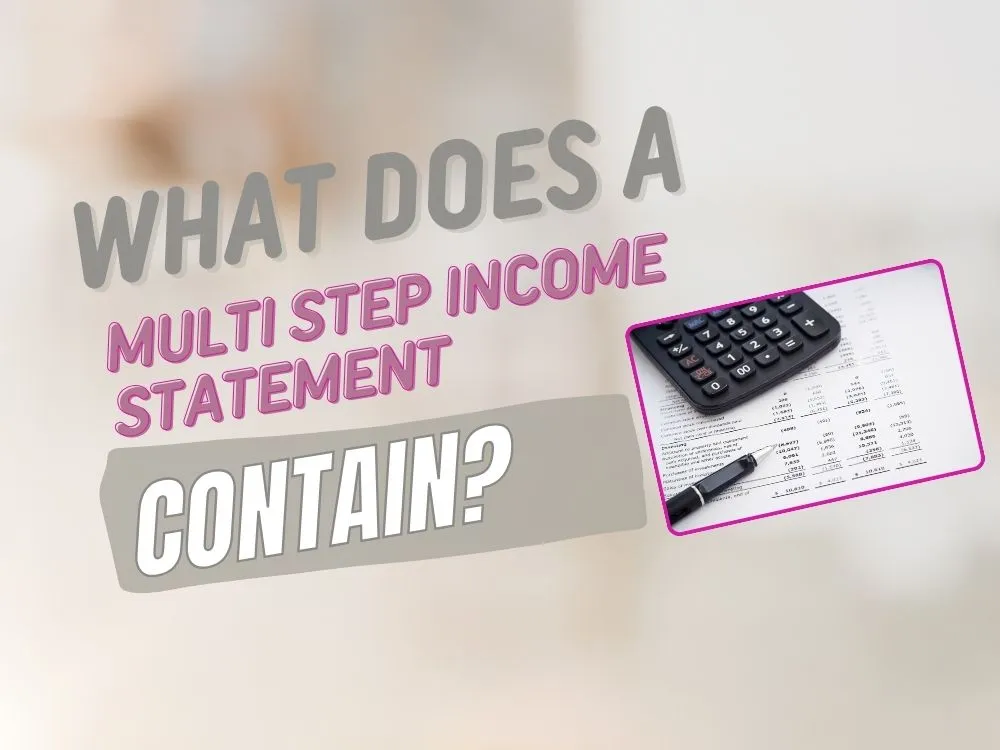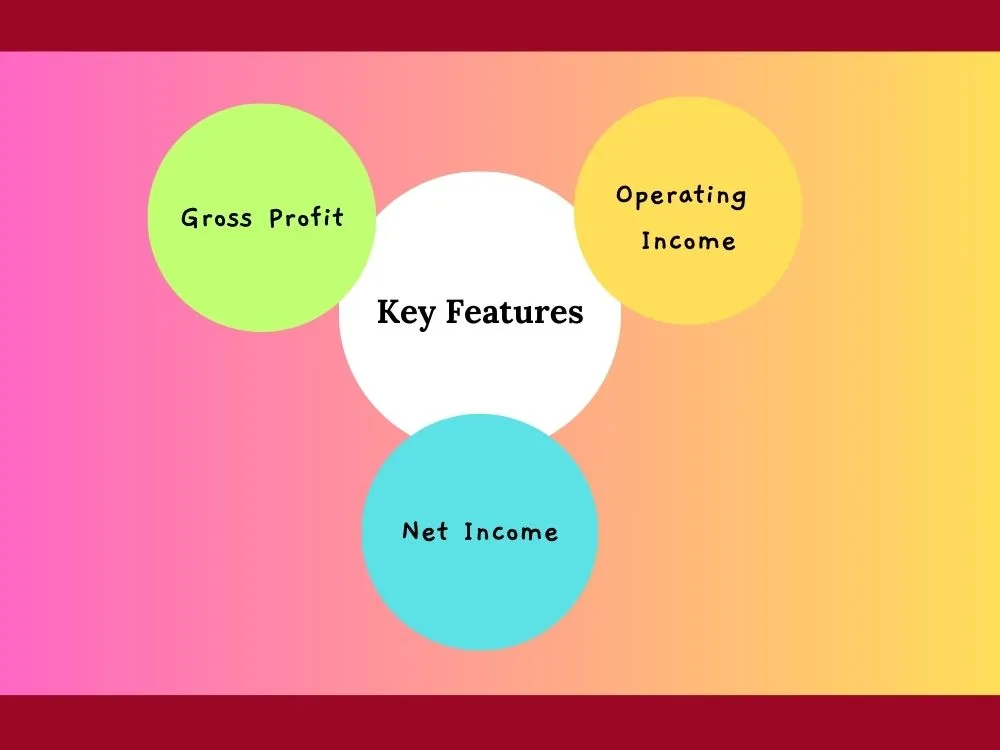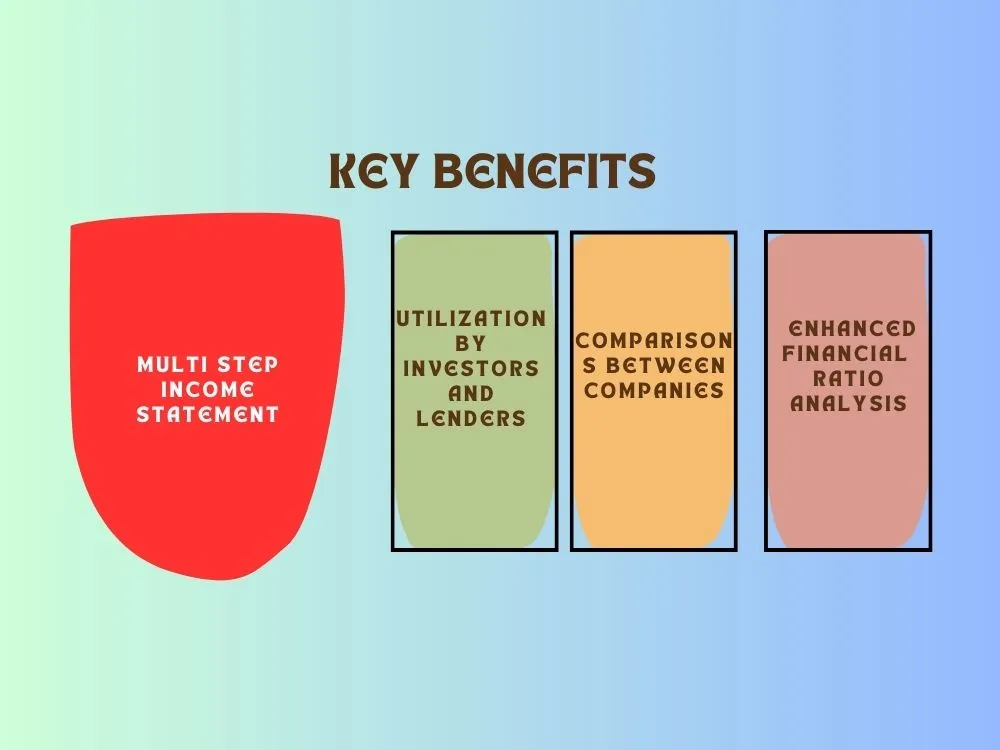
Multi Step Income Statement: A Practical Guide for Financial Clarity
Businesses need a detailed financial analysis to make vital decisions. A multi-step income statement is a comprehensive tool that provides a detailed breakdown of a business’s revenues and expenses beyond the traditional income statements.
Organizations can deeply understand their financial status by using a multi-step income statement. It helps them make strategic financial decisions, reduce costs, and enhance the overall profit of their business.
Key Takeaways
- A detailed overview of a multi-step income statement, including essential elements like revenues, costs, and expenses.
- Understand how to calculate and use key metrics such as gross profit, operating income, and net income to measure business performance.
- Learn why distinguishing operating expenses from non-operational ones is very important for recognizing major costs and determining efficiency.
- See how practical examples, such as Bellisimo Food Manufacturers, can help in applying the multi-step income statement to analyze financial data.
- Know how investors and lenders use this detailed statement to make informed decisions about a company’s profitability and financial stability.
Through this guide, we believe in bridging the gap between theory and practice using real-world examples. Let’s discuss the crucial elements of a multi-step income statement to get a clear picture
The Structure of a Multi-Step Income Statement

Definition and Purpose
A multi-step income statement is a comprehensive financial document that comprises different sections like sources of income, cost of goods sold (COGS), and operating expenses.
By categorizing revenues and expenses, this statement provides a good understanding of the financial status of the business to stakeholders. It also serves as a roadmap for financial transparency, which reveals the health of the business.
This is crucial for investors to make vital investment decisions. This detailed breakdown of income and expenses lets businesses identify their net profit.
Distinction from Traditional Income Statement
The traditional income statement is a simple, straightforward calculation of a business's profit, which is like ‘revenues minus expenses.' However, a multi-step income statement is a detailed financial document that represents a business’s financial health.
A traditional income statement often combines operating and non-operating expenses, but a multi-step income statement breaks down the costs in separate sections for clarity. The following table gives you a clear idea about the differences:
Table 1: Difference Between Traditional and Multi-Step Income Statements
| Aspect | Traditional Income Statement | Multi Step Income Statement |
|---|---|---|
| Overview | Summarizes revenues and expenses | Provides a detailed breakdown of revenues and expenses |
| Operating Activities | Often combines operating and non-operating activities | Separates operating and non-operating activities for clarity |
| Calculation of Operating Income | Revenue - Expenses | Revenue - Cost of Goods Sold (COGS) - Operating Expenses |
| Introduction of Gross Profit | Not explicitly calculated | Gross Profit = Revenue - Cost of Goods Sold (COGS) |
| Focus on Operational Efficiency | Limited visibility into the efficiency of production and direct costs | Highlights efficiency through the calculation of Gross Profit |
| Insight into Core Business Operation | Provides a basic overview of profitability | Offers a detailed view of profitability derived from day-to-day operations |
Significance of Detailed Revenue and Expense Breakdowns
This is important to identify each section thoroughly and to make financial decisions in the future. It's not just about figuring out the profit from the income and expenses, but it's crucial to break down the cost of goods sold and other non-operating expenses in detail.
This approach helps identify how much is the exact cost spent for the goods sold. Plus, the sales income generated from it. Here, the gross profit calculation is accurately represented in the multi-step income statement.
It also displays the detailed breakdown of all operating and non-operating expenses for net profit calculation. This way, stakeholders can easily find out the significant cost contributors. Plus, they will be able to strategically implement cost-cutting strategies in the next fiscal year.
Key Features of Multi-Step Income Statement

A) Gross Profit
Gross profit is an important financial metric that shows the efficiency of the company’s operation. Normally, it's calculated by subtracting the cost of goods sold (COGS) from the total sales revenue.
It can be a strategic tool for businesses to make informed decisions about their pricing, production, and overall financial health.
- Gross Profit = Revenue - COGS
Let’s understand this easily with the following example:
XYZ Retailers is a hypothetical business that operates in the fashion retail industry. For the fiscal year, they generated $800,000 in total revenue from clothing sales. The Cost of Goods Sold (COGS), which includes the expenses directly tied to producing or purchasing the clothing items, amounted to $450,000.
Now, let's calculate the Gross Profit:
$800,000 - $450,000 = $350,000
B. Operating Profit/Income
Operating profit, aka operating income. It's a crucial metric within the multi-step Income statement. It shows the profitability derived specifically from a company's core operations.
In simpler terms, operating profit reflects the earnings of a company that are generated after covering the direct costs of goods or services (Gross Profit) and subtracting its operating expenses.
- Operating Income = Gross Profit - Operating Expenses
Let’s assume the same previous example, ‘XYZ Retailers’, which generated a gross profit of $350,000, had to bear the operating expenses of $70,000. The Operating profit is:
$350,000 – $70,000 = $280,000
C. Net Income
This is the final profit calculation of the multi-step income statement. It represents the ultimate measure of a company's profitability that encompasses all revenue, expenses, and additional financial activities.
In simpler terms, Net Income takes into account not only the profit generated from core operations (Operating Income) but also factors in additional income streams and expenses that fall outside the day-to-day business operations.
A positive net income signifies that a company has generated profits after considering all aspects of its operations and financial activities. Conversely, a negative net income indicates a loss.
- Net Income = Operating Income + Non Operating Income - Non Operating Expenses
Let’s calculate the net income of the same example of ‘XYZ Retailers’. Assuming it generated non-operating income of $50,000 and non-operating expenses of $45,000.
$280,000 + $50,000 – $45,000 = $285,000
Practical Example for Multi-Step Income Statement
The following sample illustration of ‘Bellisimo Food Manufacturers’ multi-step income statement for the fiscal year ending December 31, 2026, provides a detailed explanation of all elements:
Table 2 Sample Multi-Step Income Statement
Bellisimo Food Manufacturers Multi Step Income Statement 12/31/2026 | |
|---|---|
Breakdowns | Amount in US Dollars ($) |
| Revenue | |
| Sales of Goods | 800,000 |
| Services Revenue | 200,000 |
| Total Revenue | 1000,000 |
| Cost of Goods Sold (COGS) | |
| Cost of Goods Manufactured | 300,000 |
| Cost of Goods Purchased | 100,000 |
| Total COGS | 400,000 |
| Gross Profit | |
| Gross Profit = Total Revenue - COGS | 1000,000 – 400,000 = 600,000 |
| Operating Expenses | |
| Employee salaries | 40,000 |
| Advertising and Marketing | 25,000 |
| Rent | 28,000 |
| Utilities | 35,000 |
| Maintenance | 20,000 |
| Insurance | 12,000 |
| Depreciation | 18,000 |
| Miscellaneous | 6,000 |
| Total operating Expenses | 184,000 |
| Operating Income Before Tax | |
| Operating Income BT = Gross Profit – Operating Expenses | 600,000 – 184,000 = 416,000 |
| Net Income After Tax | |
| Income Tax (20% of operating income Before Tax) | 20% * 416,000 = 83,200 |
| Net Income After Tax = Operating Income BT – Income Tax | 416,000 – 83,200 = 332,800 |
| Non-Operating Income and Expenses (NOIE) | |
| Interest Income | 10,000 |
| Interest Expenses | 15,000 |
| Total Non-Operating Income/Expenses | -5,000 |
| Net Income | |
| Net Income = Net Income After Tax – NOIE | 332,800 – 5000 = 327,800 |
Bellisimo Food Manufacturers Profits in Summary for the fiscal year December 31, 2023
- Gross Profit = $600,000
- Operating Income/Profit Before applicable Tax = $416,000
- Net Income After Tax = $332,800
- Net Income = $327,800
Key Takeaways for Future Financial Planning – Bellisimo Food Manufacturers
Here are some key takeaways that provide insights for Bellisimo Food Manufacturers to shape future financial planning, emphasizing areas for improvement, efficiency, and sustained profitability.
- Revenue Diversification: Evaluate the mix of revenue sources, with Sales of Goods contributing $800,000 and Services Revenue at $200,000. Consider strategies to diversify product and service offerings further to enhance revenue stability.
- Gross Profit Efficiency: With a Gross Profit of $600,000, analyze the efficiency of production processes and cost management. Continuous improvement in manufacturing and supply chain operations can enhance gross profit margins.
- Operating Expense Optimization: Operating Expenses totaling $184,000 require scrutiny. Evaluate individual components such as employee salaries, advertising, and maintenance for potential optimization. Cost-effective measures in these areas can positively impact profitability.
- Operating Income Sustainability: Operating Income Before Tax stands at $416,000. Maintain a focus on sustaining and potentially increasing operating income through efficient cost management, process improvements, and strategic investments.
- Tax Planning and Liability Management: Income Tax, calculated at 20% of Operating Income Before Tax, amounts to $83,200. Explore tax planning strategies to optimize tax liability while ensuring compliance with regulations.
- Net Income After Tax: Net Income After Tax is $332,800. This reflects the company's profitability after considering income tax obligations. Strive for consistent growth in net income through prudent financial management.
- Non-Operating Income/Expenses Impact: Non-Operating Income/Expenses, which include interest income and expenses, affect the bottom line. Monitor these elements for potential adjustments that align with the company's financial objectives.
- Strategic Investment in Miscellaneous Expenses: Miscellaneous expenses totaling $6,000 may include strategic investments. Evaluate the impact of such investments on overall performance and match them with long-term business objectives.
- Continuous Performance Monitoring: Establish regular performance monitoring mechanisms to track key financial metrics. This ensures prompt identification of trends, challenges, and opportunities. This will enable proactive adjustments to financial strategies.
Advantages of a Multi-Step Income Statement for Analysis

Utilization by Investors and Lenders
Investors and lenders need to make financial decisions. Here, they make those decisions based on the financial stability or profitability of the company they are willing to invest in or lend to. A multi-step income statement is helpful for this evaluation, which shows the financial health of the business.
Investors: They look up this statement to see whether the company is profitable or not. If the company shows a good profit in the last fiscal year, investors are more willing to put their investment in the company, expecting to get a good return. Conversely, if the company doesn’t generate enough profit or has business losses, then investors step back from investing.
Lenders: On the other hand, lenders check the statement to assess a borrower's ability to generate consistent profits. Different sections of a multi-step income statement, such as gross profit, operating income, and net income, are good indicators to show a clear view of the borrower’s (company’s) capacity to meet debt obligations.
Comparisons Between Companies
A multi-step income statement is a detailed breakdown of the profit and expenses of a company. With the help of this statement, stakeholders can easily compare how well two or more businesses in the same industry perform in respective of finance.
This is also useful to evaluate different companies in the same niche with their ability to generate profits, manage operating and non-operating expenses, and so on. Investors and other stakeholders essentially use these metrics to compare businesses before making crucial financial decisions.
Enhanced Financial Ratio Analysis
By providing a detailed breakdown of revenue and expenses, a multi-step income statement helps analysts assess financial ratios. Different ratios, such as gross profit margin, operating margin, and net profit margi,n are calculated precisely and offer a very good understanding of a company's profitability at different operational levels.
Also, these financial ratios indicate a business’s liquidity, solvency, and overall financial ability. Investors and analysts look into these ratios in the first place to make up their minds about investing in the business.
Final Words
The multi-step income statement is emerging as a strong financial reporting tool that offers detailed information on the business’s overall profitability. This statement is made up of crucial information like gross profit, operating income, operating expenses, and net profit.
Further, it differs from traditional income statements which only focus on calculating the profit by just subtracting the expenses from income without a detailed breakdown. The multi-step income statement provides a clear view and helps investors, lenders, and other stakeholders to make crucial investment, lending, or other financial decisions.
FAQs
Q1: How does a multi-step income statement differ from a traditional income statement?
Traditional ones are like basic calculations (income minus expenses), but a multi-step income statement breaks it down further. It separates different activities, calculates gross profit explicitly, and gives a clear picture.
Q2: Why is a multi-step income statement useful for investors and lenders?
Investors check it to see if a company makes a profit. Lenders use it to know if a borrower can consistently make money to pay back debts. Sections like gross profit, operating income, and net income show the company's financial health.
Q3: How does it help compare different companies?
It breaks down how companies make and spend money, making it easy to compare. Investors use it to decide where to put money based on who makes more profit and manages costs better.
You might be Interested In
https://smarttoolsai.com/post/how-much-is-5-figures
.webp)